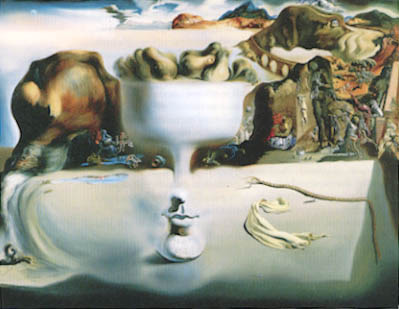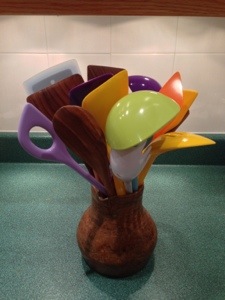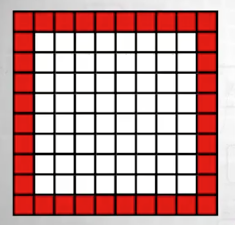Last week’s assignment for the MoMA course
was:
Browse through MoMA’s online Collection and choose an image. Research some information about the work of art using MoMA.org and/or other online sources. Please upload a thumbnail image of your selected artwork. For your forum post respond to these questions: What drew you to this work of art? What information were you able to find out about this work?
If you were to teach with this work, what aspects would you like to introduce to your students?
I spent quite a bit of time browsing the collection – saved a number of images but in the end chose this one: Blue Vase with Nasturtiums – Judy Pfaff 1987
What’s not obvious in the image of this piece is how three dimensional it is – I came across another photo of it which made the 3D aspect of the sculpture evident. I love the vivid colour, the many round objects juxtaposed – the closest I come to something like this in my home is the jug on my kitchen counter full of colourful kitchen utensils.
I wasn’t able to find out a lot about the piece except the following:
“One of the most revealing details of the new installation of post-World War II painting and sculpture at the Museum of Modern Art is the placement of Judy Pfaff’s “Blue Vase With Nasturtiums” near the escalator on the third floor. This 1987 painting-sculpture is very much a Pfaff work: exuberant, even antic, multicolored, turning the history of art on its ear in an upbeat, good-natured way.”
With it’s placement near the escalator – you’d certainly see the 3D of the piece either coming or going! It’s a happy piece, it’s full of life. playful. I’d want to encourage students (of any age) to think about the objects in their lives that they could use to create something (a collage, a sculpture) that evokes a feeling as strongly as this piece does for me – I just want to smile when I see it.
This apparently is a large object: Date: 1987, Medium: Enamel on steel and plastic laminate on wood, Dimensions: 9′ 7″ x 8′ 6 1/2″ x 66″ (292.1 x 260.3 x 167.7 cm) (variable) – I love that descriptor “variable” – has to do with the fact that the parts move, I imagine, so the dimensions aren’t completely fixed.

Here is another photo I found online that gives an indication of the “depth” of the sculpture – it’s substantial. I’d love to see the actual piece sometime.In case the photos aren’t showing, here’s a link to the image on the MoMA site:
http://www.moma.org/collection/object.php?object_id=81109
PS – I didn’t know Judy Pfaff’s work – this is the first image of one I’ve seen. I just looked her up: her work is certainly exuberant:
http://www.judypfaffstudio.comThe Pfaff sculpture has me thinking about another bouquet – the one on my kitchen counter:







You must be logged in to post a comment.